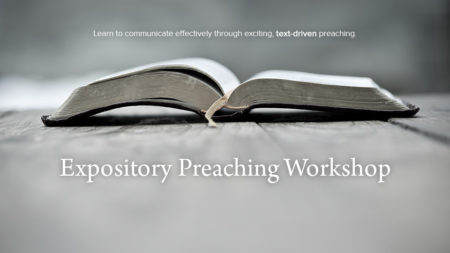1 John 2
1 John 2:28-29
1 John 2:28–29 is a hinge paragraph in the letter.[1]That verse 28 is the beginning of a new paragraph is confirmed by Grace Sherman and John Tuggy, A Semantic and Structural Analysis of the Johannine Epistles (Dallas: Summer Institute of Linguistics, 1994),... Read More »
1 John 2:26-27
John has already written about false teachers and their characteristics. Because of this, it is difficult to discern whether verse 26 concludes the previous section or introduces a new section. Perhaps John intended both. Here he discusses another characterist... Read More »
1 John 2:18-25
John contrasts false teachers and true teachers in verses 18–21. The presence of false teachers is a sign of the end times (18) and their defection is proof of their true nature (19). The second mark of false teachers is they deny the faith. In verse 20, Joh... Read More »
1 John 2:15-17
The following are some exegetical and semantic analysis notes for this paragraph. I. How many sentences are in the text? 3 in UBS Greek Text: 4 in KJV, NASB, NIV: S1 = 15a �... Read More »
1 John 2:12-14
This is a very unusual paragraph in the letter and should be carefully analyzed before preaching. John uses three descriptive terms for the people to whom he writes: children, young men, and fathers. Notice he uses each of these terms twice. Your first thought... Read More »
1 John 2:7-11
There are two sub-paragraphs in this paragraph: 7-8; 9-11. Verses 7-8 provide the grounds or basis for the appeal in vv. 9-10, followed by a further ground or basis for the appeal in v. 11. Thus, the sermon can arranged in two parts: A. Because Love: the new c... Read More »
1 John 2:3-6
This appears simple enough, but its structure is a bit confusing. Sherman and Tuggy state it this way: “We should obey what he commands (GENERIC APPEAL), and since it is good to love God in the manner in which he loves us (basis) we ought to behave just as C... Read More »
1 John 2:1-2
This paragraph essentially affirms three propositions, which should function as the overall outline of the sermon. The first proposition has at its heart a mitigated exhortation in v. 1: Christians should not sin = Don’t sin! The two grounds or bases of this... Read More »
Penetrating Principles for Preaching in 1 John
Dr. Matthew McKellar’s Penetrating Principles for Preaching in 1 John lecture at the 2014 Expository Preaching Workshop. Read More »
Ready or Not: Here He Comes
Dr. Robby Gallaty’s Ready or Not: Here He Comes lecture at the 2014 Expository Preaching Workshop. Read More »





